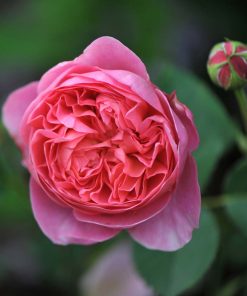Description
Rosa ‘Eye of the Tiger’ is a striking shrub rose that will add a touch of drama to any garden. Its unique blooms feature velvety, deep yellow petals with striking red-orange centers, resembling the eye of a tiger. These vibrant flowers have a light, sweet fragrance and are borne in clusters throughout the summer. The glossy, dark green foliage is disease-resistant and provides the perfect backdrop to showcase the eye-catching blooms. This rose will reach a height of up to 90cm (3ft). To complement the bold colors of ‘Eye of the Tiger’, consider planting it with other bright blooms, such as purple coneflower (Echinacea purpurea) or Russian sage (Perovskia atriplicifolia). The rich, dark green foliage of Japanese holly (Ilex crenata) or boxwood (Buxus sempervirens) would also provide a great backdrop for this striking rose.


















